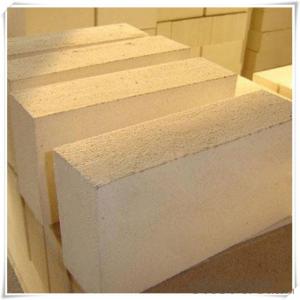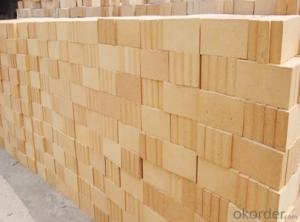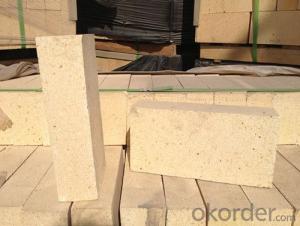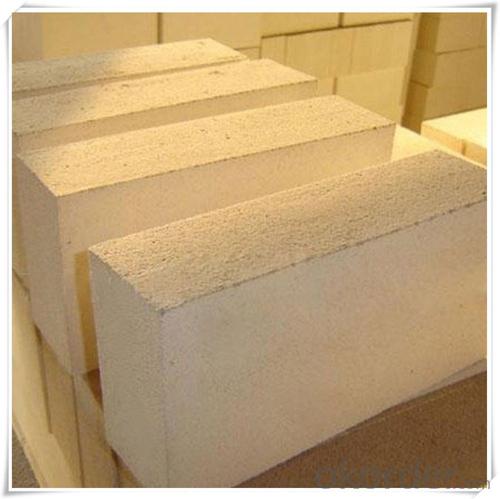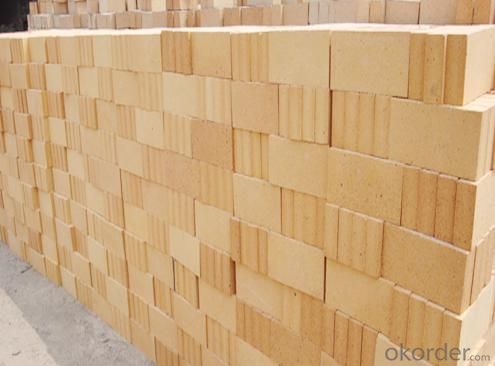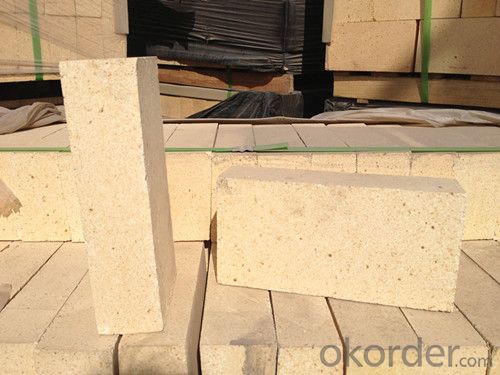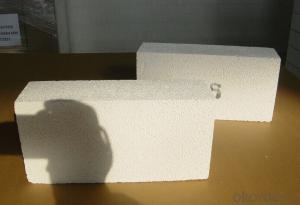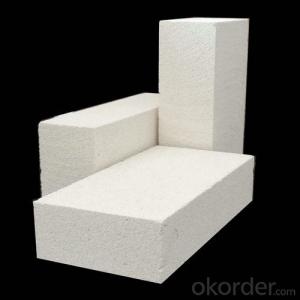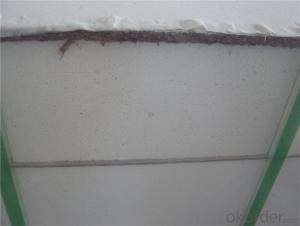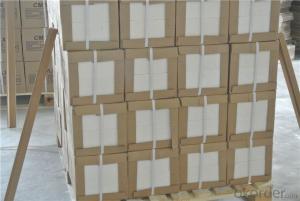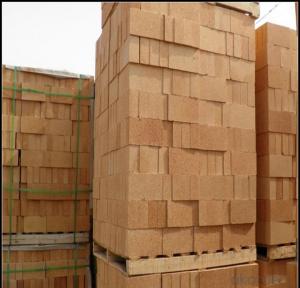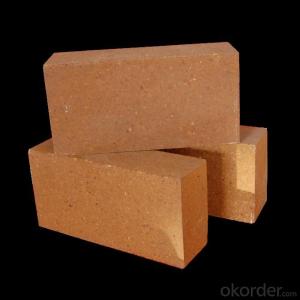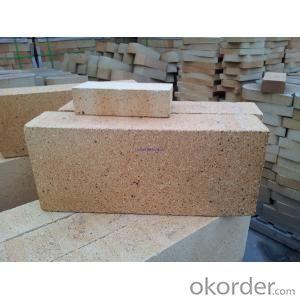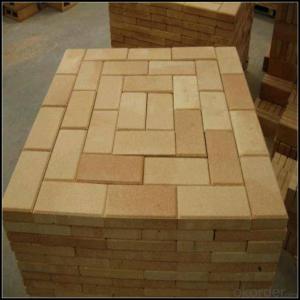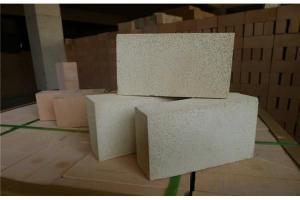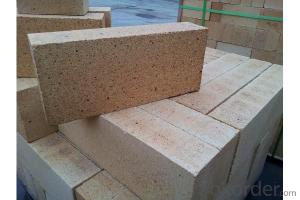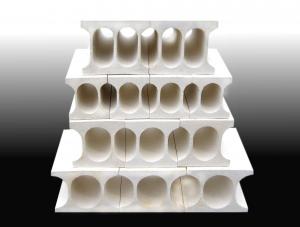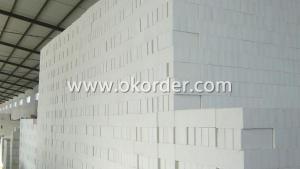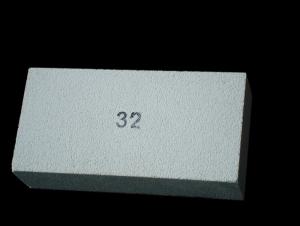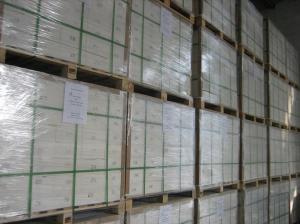Insulating Fire Brick for Steel, Cement, and Glass Industries
- Loading Port:
- Tianjin
- Payment Terms:
- TT OR LC
- Min Order Qty:
- 30 m.t.
- Supply Capability:
- 10000 m.t./month
OKorder Service Pledge
OKorder Financial Service
You Might Also Like
CNBM conforms strictly to the requirements of ISO 9000 quality control system during the production. MSDS is also available if you want. The thermal insulation fire clay brick meet with the requirements of ASTM & JIS standards. So pls stay cool with our quality.
Brief discription for Alumina Fire Brick
CNBM Alumina Fire Brick are classified according to alumina content ranging from 48% to 90%.
CNBM Alumina Fire Brick are commonly used in blast furnace, hot blast furnace, the roof of electric furnace, teeming ladle, rotary kiln, regenerator, etc.
Brief features for Alumina Fire Brick
◆Low thermal conductivity
◆Excellent acid and base slagging resistance
◆High refractoriness
◆Excellent thermal shock resistance
◆Excellent mechanical strength
◆Good spalling resistance and wear resistance.
◆Good corrosion resistance.
◆High-temperature creep rate is quite low.
◆Good volume stability at high temperature.
◆Low bulk density, low thermal conductivity, good thermal insulation performance.
Technical data for high aluminia bricks
ITEM | UAL48 | UAL55 | UAL65 | UAL75 | UAL80 | UAL85 | ALP80 |
Refractoriness, ℃ | 1750 | 1770 | 1790 | 1790 | 1810 | 1810 | 1810 |
Apparent Porosity,% | 22 | 22 | 23 | 23 | 20 | 20 | 18 |
C.C.S, Mpa | 39 | 44 | 49 | 53 | 55 | 60 | 100 |
Refractories Under Load (0.2Mpa),℃ | 1420 | 1470 | 1500 | 1520 | 1500 | 1520 | 1550 |
Reheating Linear Change,% | 1450℃x2h 0.1~-0.4 | 1500℃x2h 0.1~-0.4 | 1500℃x2h 0.1~-0.4 | 1500℃x2h 0.1~-0.4 | 1550℃x2h -0.5~+0.5 | 1550℃x2h -0.5~+0.5 | 1550℃x2h -0.5~+0.5 |
Al2O3 Content , % | 48 | 55 | 65 | 75 | 80 | 85 | 82 |
Why us
Professional fire brick manufacturer. We have being specialized in producing refractory fireclay brick for more than 40 years so that we can guarantee a stable quality.
Guaranteed quality. Our production process conforms strictly to the requirements of ISO9000 quality management system. Quality inspection is carried out in every links of our production. SGS third party inspection is available.
Sound after sales service. We provide sound after sales service. We provide 24 hours’ consultation service. We are ready to answer your consultations at any time.
- Q: Are insulating fire bricks resistant to hydrogen sulfide?
- Yes, insulating fire bricks are generally resistant to hydrogen sulfide due to their high melting point and chemical stability.
- Q: Are insulating fire bricks suitable for insulation in refinery heaters?
- Yes, insulating fire bricks are suitable for insulation in refinery heaters. These bricks are specifically designed to withstand high temperatures and provide excellent insulation properties, making them ideal for use in refinery heaters where insulation is crucial to minimize heat loss and improve energy efficiency.
- Q: Can insulating fire bricks be used for insulation in cold storage facilities?
- Indeed, insulating fire bricks have the capability to be utilized for insulation purposes within cold storage facilities. These bricks are fashioned from lightweight materials possessing exceptional insulating properties, such as ceramic or refractory fibers. Their low thermal conductivity allows for the efficient prevention of heat transfer and the maintenance of a consistent temperature inside the cold storage facility. Moreover, these bricks exhibit resistance to extreme cold temperatures and possess the ability to endure thermal shock, rendering them fitting for employment in cold storage applications. Furthermore, insulating fire bricks possess durability and are capable of providing long-term insulation, thereby reducing energy consumption and preserving the desired temperature required for storing perishable goods.
- Q: Do insulating fire bricks expand and contract with temperature changes?
- Yes, insulating fire bricks do expand and contract with temperature changes. Like any material, when exposed to heat, the insulating fire bricks expand, and when cooled, they contract. This expansion and contraction occur due to the thermal expansion coefficient of the material, which determines how much it will expand or contract for a given change in temperature. It is important to consider this property when using insulating fire bricks in applications where temperature fluctuations are expected, as failure to account for the expansion and contraction may lead to structural damage or cracking.
- Q: Are insulating fire bricks resistant to ultraviolet (UV) radiation?
- Insulating fire bricks are typically not resistant to ultraviolet (UV) radiation. UV radiation can cause degradation and discoloration of materials over time, especially those that are not specifically designed to withstand it. Insulating fire bricks are primarily used for their high temperature resistance and insulating properties, rather than their ability to withstand UV radiation. Therefore, if exposed to prolonged UV exposure, insulating fire bricks may experience reduced performance, cracking, or deterioration. It is important to consult the manufacturer's specifications or guidelines to determine the specific UV resistance of insulating fire bricks, as some manufacturers may offer specialized products that are more UV resistant.
- Q: Do insulating fire bricks require any special anchors or supports for installation?
- Yes, insulating fire bricks typically do not require any special anchors or supports for installation. They are lightweight and can be easily stacked or laid in place without additional reinforcement.
- Q: What are the types of building blocks?
- Ordinary housing: building brick (clay brick), and non sintered brick (sand lime brick, fly ash brick, cement brick, etc.)
- Q: Can insulating fire bricks be used in combination with other insulation materials?
- Insulating fire bricks can be utilized alongside other insulation materials to maximize their thermal insulation capabilities. Renowned for their exceptional thermal insulation properties, insulating fire bricks are commonly employed in kilns, furnaces, and fireplaces to effectively minimize heat transfer. However, attaining optimal thermal efficiency may necessitate additional insulation in certain instances. By merging insulating fire bricks with alternative insulation materials, the overall insulation performance can be significantly augmented. For instance, ceramic fiber blankets or boards can be employed in conjunction with insulating fire bricks to furnish supplementary insulation and bridge any gaps or joints between the bricks. This amalgamation aids in minimizing heat loss and elevating energy efficiency. Moreover, utilizing multiple insulation materials can confer additional advantages, such as heightened fire resistance, enhanced sound insulation, and fortified structural integrity. By skillfully combining diverse insulation materials, a more efficacious insulation system can be fashioned to meet the specific requirements of various applications. When combining different insulation materials, it is imperative to consider their compatibility and adherence to one another. Each material may possess distinct thermal properties, density, and installation prerequisites, necessitating strict adherence to the manufacturer's recommendations and guidelines for appropriate installation. In conclusion, the utilization of insulating fire bricks in conjunction with other insulation materials is instrumental in augmenting thermal insulation and overall performance across diverse applications. However, ensuring compatibility and adhering to proper installation guidelines is vital in order to achieve optimal outcomes.
- Q: Are insulating fire bricks resistant to metal penetration?
- Insulating fire bricks are generally resistant to metal penetration. These bricks are made from refractory materials, which have high melting points and are designed to withstand high temperatures. They are often used in applications where they are exposed to extreme heat, such as in furnaces and kilns. Insulating fire bricks have low thermal conductivity, meaning they are good at preventing heat transfer. This property helps to keep the outer surface of the bricks cool, even when the interior is exposed to intense heat. As a result, these bricks can resist the penetration of molten metal. However, it is important to note that the resistance of insulating fire bricks to metal penetration can vary depending on the specific composition and quality of the bricks. Some lower-grade bricks may not provide the same level of resistance as higher-quality ones. Additionally, the duration and intensity of the heat exposure can also affect the bricks' resistance. In conclusion, while insulating fire bricks are generally resistant to metal penetration, it is crucial to consider the specific characteristics and quality of the bricks being used, as well as the conditions in which they are exposed to heat.
- Q: Can insulating fire bricks be used in the construction of smelters or foundries?
- Yes, insulating fire bricks can be used in the construction of smelters or foundries. Insulating fire bricks have excellent thermal insulation properties and can withstand high temperatures, making them suitable for lining the walls and floors of smelters or foundries. They help to retain heat, improve energy efficiency, and protect the surrounding structures from extreme temperatures.
Send your message to us
Insulating Fire Brick for Steel, Cement, and Glass Industries
- Loading Port:
- Tianjin
- Payment Terms:
- TT OR LC
- Min Order Qty:
- 30 m.t.
- Supply Capability:
- 10000 m.t./month
OKorder Service Pledge
OKorder Financial Service
Similar products
Hot products
Hot Searches
Related keywords
